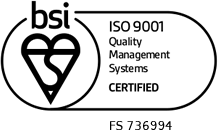SensorsMarkys Cain2021-09-03T04:32:55+01:00
The Piezoelectric effect is the ability of certain materials to generate an electric charge in response to mechanical stress. Such materials also have the opposite effect – ie: the application of electric voltage produces mechanical strain in the materials. This makes piezoelectric materials effective in sensors and transducers, used for example in the automotive and healthcare industries, and for environmental monitoring. Piezoelectric materials, like lead zirconate titanate (PZT), provide excellent electro-mechanical coupling thus enabling such materials to both sense and interact with their environment. Applications that demonstrate this include micro- electro-mechanical systems (MEMS), solid state gyros and strain sensors. PZT is widely used for these applications since it provides large piezoelectric coupling coefficients and has a relatively high Curie temperature, enabling its use in a wide variety of environments. The requirements for accurate and reliable sensors for pressure, stress, or vibration, at ever extreme conditions (such as high temperature) dominates the sensors research landscape for piezo materials. The technical challenges include: materials having a useful piezo response at temperatures that are typically far in excess of many material’s Curie temperature; the ability to accurately measure very tiny charges or currents – often in the fC or pC range, sometimes over long time scales, for example; all interconnections being reliable and thermally stable; long lifetime and fatigue resistance. For more information or assistance in selection of sensor materials, of bulk, thick or thin film form, MEMS based or the newer single crystal based materials – please get in contact with us.









